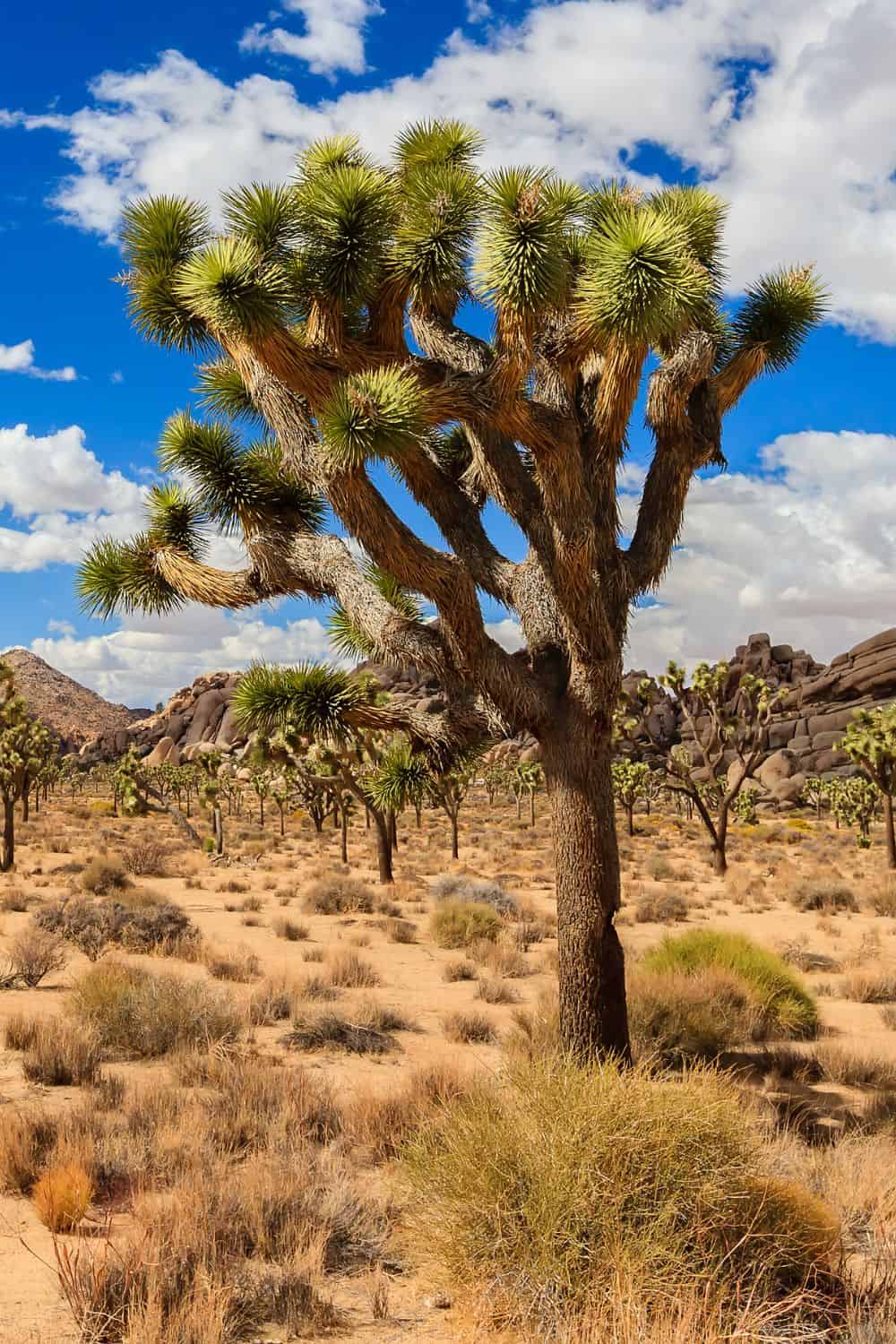
Joshua Tree National Park is a unique destination that attracts visitors from all over the world with its stunning natural beauty and distinct rock formations. Located in Southern California, this national park is home to a wide variety of geological features that have been formed over millions of years. In this article, we’ll explore the geology of Joshua Tree National Park and how these features were formed.
Rock Formations
One of the most striking features of Joshua Tree National Park is its rock formations. The park is home to a variety of different types of rocks, including granite, monzogranite, and gneiss. These rocks have been exposed over time due to erosion caused by wind and water, creating unique formations that dot the park’s landscape.
Granite
Granite is the most common type of rock found in Joshua Tree National Park. It is a coarse-grained, intrusive igneous rock that is made up of quartz, feldspar, and mica. Granite is formed when molten rock, or magma, cools slowly beneath the Earth’s surface, allowing crystals to form.
Monzogranite
Monzogranite is a type of granite that is found in Joshua Tree National Park. It is similar to granite but contains more potassium feldspar and less plagioclase feldspar. Monzogranite is formed when magma cools and crystallizes at a slower rate than granite.
Gneiss
Gneiss is a metamorphic rock that is found in Joshua Tree National Park. It is formed when sedimentary or igneous rocks are subjected to high heat and pressure, causing them to change form. Gneiss is characterized by its banded appearance and can be found throughout the park.
Boulders
In addition to its rock formations, Joshua Tree National Park is also known for its boulder fields. These areas are made up of large boulders that have been eroded over time by wind and water. The boulders in Joshua Tree National Park are unique in that they are made up of granite and monzogranite, giving them a distinct look and feel.
Joints
Joints are cracks in rock that form when the rock is subjected to stress. In Joshua Tree National Park, joints can be seen in many of the park’s rock formations. These cracks can be horizontal or vertical and can vary in size. Over time, water can seep into these cracks, causing them to widen and creating unique formations.
Faults
Joshua Tree National Park is also home to several faults, including the San Andreas Fault. The San Andreas Fault is a major fault line that runs through California and is responsible for many of the state’s earthquakes. The fault can be seen in several locations throughout the park and has caused the landscape to shift and change over time.
Erosion
Erosion is a major factor in the formation of the geological features found in Joshua Tree National Park. Wind and water are the primary forces of erosion in the park, shaping the landscape over millions of years. The wind in the park can be particularly strong, leading to the formation of unique features such as hoodoos and arches.
Hoodoos
Hoodoos are tall, thin spires of rock that are formed over time through erosion. They are typically found in arid regions and are a common feature in Joshua Tree National Park. Hoodoos are formed when a layer of hard rock is topped by a layer of softer rock. As the softer rock erodes, it leaves behind the hard rock, creating the spire-like shape of a hoodoo.
Arches
Arches are another geological feature that can be found in Joshua Tree National Park. They are formed when erosion wears away the rock beneath an overhanging section, leaving a free standing arch. Arches can be found throughout the park and vary in size and shape.
In conclusion, Joshua Tree National Park’s geology is a major draw for visitors to the park. The park’s unique rock formations, boulders, joints, faults, and erosion features have been formed over millions of years and provide a glimpse into the Earth’s geological history. The park is a fascinating destination for anyone interested in geology and offers a chance to explore and learn about the natural world around us.
Related posts:
Joshua Tree National Park, located in Southern California, is a unique and beautiful destination for camping and outdoor recreation. The park is named after its iconic Joshua trees, a type of yucca plant that is found only in this region. I...
Joshua Tree National Park is an expansive protected area within Southern California. It is characterized by rocky, volcanic rock formations and harsh desert landscapes. Named for the area's prickly, curly-edged Joshua trees, the park surrounds the ma...
Joshua Tree National Park is one of the most popular national parks in California, known for its unique and stunning landscapes. The park is home to over 800 miles of hiking trails, ranging from easy strolls to strenuous hikes. In this arti...
Joshua Tree National Park is a stunning desert wilderness located in southern California. The park is known for its unique rock formations, stunning vistas, and its namesake tree, the Joshua tree. But beyond its natural beauty, Joshua Tree ...
Joshua Tree National Park is a unique and stunning destination for hikers of all skill levels. Located in Southern California, this national park covers over 790,000 acres and is home to a diverse array of flora and fauna, stunning geological for...
Joshua Tree National Park is an expansive protected area within California. It is characterized by stark, rugged desert landscapes and rocky, rock formations. Named after the region's prickly, twisted Joshua trees, it straddles both the Colorado Dese...